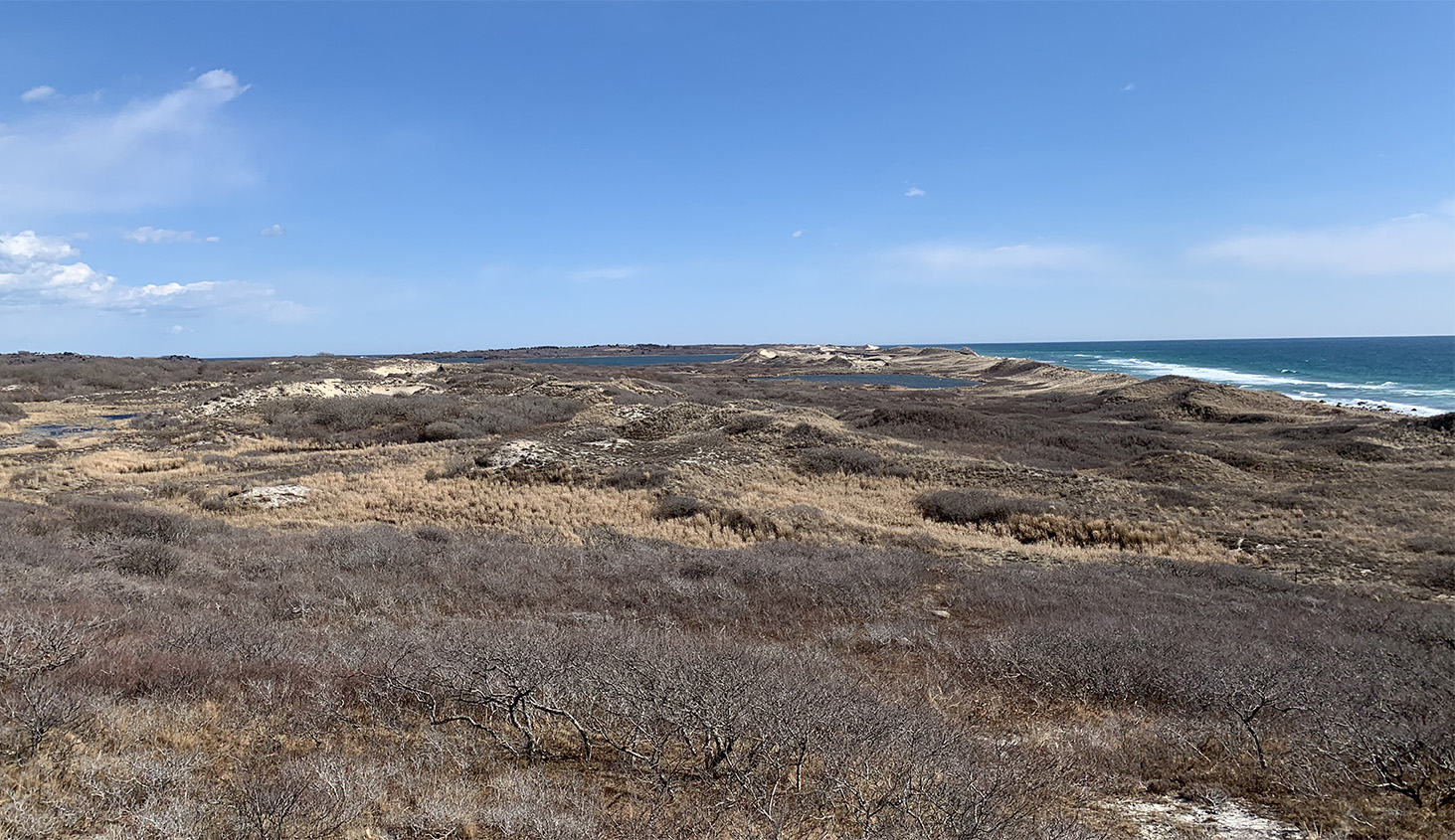By Adam R. Moore
We sought garnets. With a hammer and a chisel, I clambered about on the rocky ledge, scanning for any glint of the dark red rock among the gneiss and schist. I was camping for the week at Camp Mattatuck, a Boy Scout camp in northwestern Connecticut. I had signed up for the Nature merit badge, and the week-long program included a garnet-hunting day trip to this rocky ledge. I don’t recall finding a garnet. I do recall, however, loving the unique experience of being upon an exposed, barren, rocky ledge, utterly devoid of plants, where bedrock meets sky.
Since then, I have sought out such wild, barren places. Where I grew up, in the town of Durham, Connecticut, I used to venture out to another rocky ledge of gneiss, just east of the Mattabesett Trail on Mount Pisgah. There one could sit for a moment, and listen to the rooster below, and watch the summer sun sparkle off the flakes of mica in the bare, rough rock. Or I hiked up Pistapaug Mountain, where I could sit upon massive columns of basalt, and watch hawks soar on the updrafts. On Martha’s Vineyard, the wildest place I have yet encountered is at Squibnocket Pond Reservation, on the moors.
Moors are wild, uncultivated expanses of heathland. The most familiar moors on Martha’s Vineyard are perhaps the Lobsterville moors, on the other side of Aquinnah. It was the protection of these moors from encroaching development that spurred the formation of the Vineyard Conservation Society in 1965. At Lobsterville, the moors lie low. They include the Cranberry Lands of the Wampanoag Tribe of Gay Head (Aquinnah), and they are flanked by Menemsha Pond and Vineyard Sound.
At Squibnocket Pond Reservation, however, the moors rise high. From the shoreline of a cove of Squibnocket Pond, the moors rise— tumbling here, soaring to a height there, flattening to a perched plateau there—and end at the bluffs at Zack’s Cliffs. Throughout this landscape, the wind has scoured great patches of sand clean of any vegetation at all. From above, the land appears to have been scooped out with a great ladle. Virtually anywhere else on the Island, some kind of plant life, whether trees or grass or vines or shrubs, will happily take hold and grow, if allowed. Yet upon these moors, the stark white sand abhors any plant cover at all, and meets the constant wind unprotected.
Heather blankets the rolling hills beside these bare expanses. Among the heather grow the doughtiest examples of our common Island trees: black oak, white oak, eastern red cedar. Stout bayberries sport waxy grey berries beside the sandy dirt road that crosses this area. Inkberry grows in the low spots, next to marshland. In one spot, a stone wall climbs a rugged hill, and a grove of beetlebung grows on either side of it. On a wet March day, a high area of these moors was completely filled with water, and reflected the brilliant blue of the cold winter sky.
At one of the high points, near Zack’s Cliffs, one gazes southeast over the moors, for one of the most glorious views on Martha’s Vineyard. In the foreground stretch the convulsed and pockmarked quilt of moors. Just beyond, the blue waters of Lily Pond gleam in the sun. And in the distance, one sees the towering dunes, with Squibnocket Pond on one side and the Atlantic Ocean on the other, and far-off Nomans Land beckoning in the distance. With few houses to give a sense of proportion and scale, one can imagine the dunes as some vast and distant mountain range, where the earth is forced upwards by the collision of continental and oceanic plates.
There is, perhaps, some truth to the premise that one’s name might affect one’s interests, and perhaps one’s vocation. For me, I confess that I am indeed drawn to the moors. The moors of Squibnocket Pond Reservation are the wildest, most inscrutable, most uncultivated land that the Island has to offer. Many conservation lands offer a place to contemplate nature’s beauty: a park, a glade, a winding brook. Nature is often beautiful, yet it is also harsh, and sometimes terrible. The moors offer the place to con- template the sublime.
Photo by Kate Feiffer


